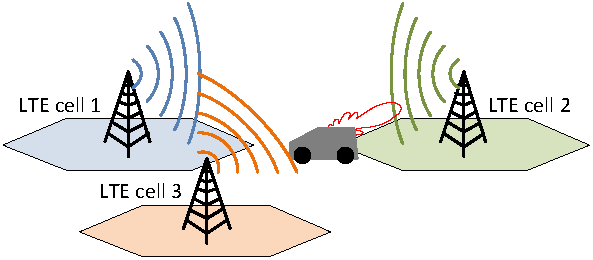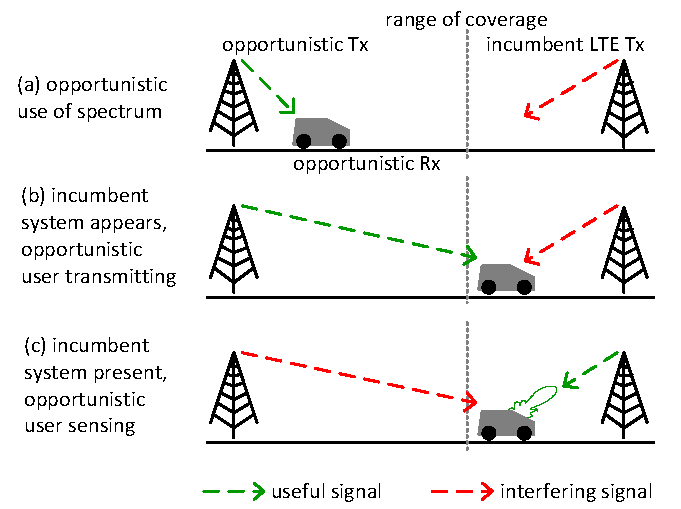Multi-antenna LTE sensing
Sensitivity measurement
This experiment derives from a metrology use case, where the multi-antenna sensing device can be used for downlink interference analysis of LTE cellular networks. The process consists of creating a list of the received signals on an LTE channel as well as obtaining their physical characteristics and identifying the base stations which are transmitting these signals. Interference analysis is based on the smart antennas approach employing an array of antennas. When this antenna array receives several sources emitted by different base stations, the signals are recombined in order to detect and demodulate each received source, while the other received signals are considered as interference that can be rejected when it comes from different directions. Since the matched filter approach is used for detection, the signal can be demodulated and system parameters like the physical layer cell identity, cyclic prefix length, duplex mode, base station signal level, Ec/I0, as well as time and frequency channel impulse response can be determined. The goal of the experiment is is to demonstrate the detection algorithm and hardware, as well as show the multi-antenna processing gain over a mono antenna sensing scenario.

Interference rejection measurement
LTE detection with spatial interference rejection capabilities can also be useful for sensing in CR environments. Consider a mobile opportunistic receiver (Rx) uses a white space in a certain frequency band that is available at a particular geographic location (a). The system has to check periodically for the presence of an incumbent user that might be utilizing that band. When the mobile opportunistic Rx moves to a location where the white space is no longer available, it receives the signal from the incumbent LTE transmitter (Tx). While the opportunistic system is not aware of the presence of the incumbent Tx, it is still communicating and for the opportunistic Rx, the signal coming from the incumbent Tx is considered as interference (b). When the opportunistic Rx senses the spectrum, the signal coming from the incumbent LTE Tx is now the signal of interest and the signal from the opportunistic Tx the interference, as it is jamming the sensing process (c). Typically, during this process silent periods are allocated in the opportunistic system waveform, in order to perform sensing without being jammed by its own system. But sensing can also be performed simultaneously with the data transfer, if the opportunistic Rx has interference rejection capabilities, i.e. by using an antenna-array and antenna processing algorithms. The goal of this experiment is to demonstrate the interference rejection capabilities of the multi-antenna sensing platform

Setup Overview













